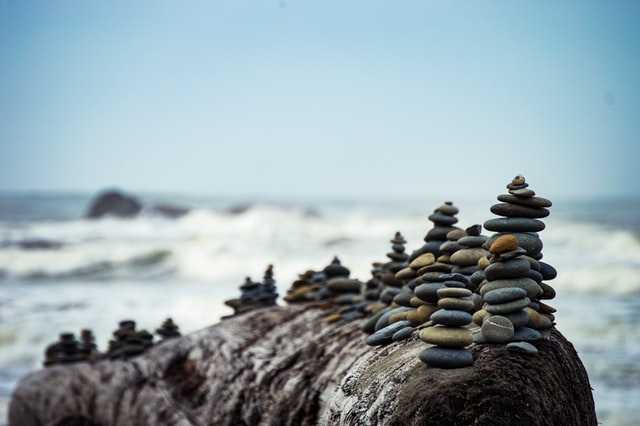|
"how to glue rocks together for landscaping" Gluing rocks together calls for a strong glue suitable for the surface-- a precious jewelry adhesive might function well for minor jobs. Still, a large project with big rocks calls for another item, such as a construction adhesive. Whichever glue you select, check out the plan very carefully to make specific the product will certainly hold up for your intended job use. Tiny to Medium rocksGlue together a collection of little rocks using fashion jewelry and metal adhesive, an "extremely"- style glue, or a fluid, putty, or paste epoxy. If you call for an evident bond, go with a clear jewelry adhesive, an incredibly adhesive, or a clear epoxy resin. Step 1: Sand for Better AdhesionSand the areas where the rocks meet with fine-grit sandpaper for a much better bond. Wipe them off with a soft cloth afterward. Step 2: Ventilation Is ImportantCover a work surface area in a well-ventilated location with plastic table linen; after that, establish the rocks and adhesives atop the tablecloth. Several strong bonds release solid fumes, so the better the airflow, the better. Step 3: Working With the AdhesivesIf you're collaborating with a two-part fluid epoxy, pour equal parts of each right into a nonreusable container; then use a small brush or cotton bud to apply the epoxy to the rocks. Rocks might slide a little bit with liquid epoxy, so place them in such a way that they can stagnate or bind them together with painter's tape. For a two-part putty epoxy, knead equivalent parts of each color into a ball until the colors mix entirely. Place a small item of the putty between the rocks; after that, push the stones together. When using incredibly adhesives or special jewelry adhesives, apply a adhesive dot to bond a tiny area or glue lines. Step 4: Wait on the Adhesive to CurePermit the bond between rocks to cure for as long as recommended on the glue bundle. Super glues may bond within a couple of mins, while epoxy materials and precious jewelry adhesives might take hours. Picking the Right AdhesiveEpoxy putties enable you to control the sticky and the rocks' setting for some time before the substance solidifies. The drawback is that the putty shows up when treated, similar to clay. Liquid epoxy resins arid straightforward and complicated, bonding rocks that might not fit well together. It may make some rocks look damp in the area of application. Since this resin is a fluid, it runs a bit after applying it to merge underneath the rocks if you utilize it excessively. Epoxy material functions well on stones, both big and small. Super adhesives and special jewelry adhesives function well where tiny bonds are needed, such as gluing small, sleek gems atop a bigger cultured stone for a necklace. Some continue to be flexible when treating, while others completely dry rock hard; check out the package tags for specifics. Building adhesive, provided in a caulk-style tube, produces bonds solid sufficient to hold larger rocks with each other, such as baseball-style rocks or river rocks around the perimeter of a self-made yard pond. Some building adhesives are not developed for usage underwater, so similar to any adhesive, read the plan thoroughly to ensure you get the kind most fit to your task. Collaborating with products so different from each other, such as stone and wood, triggers a little complicated when selecting a suitable glue. Glues for absorbent materials like wood might not adhere to non-porous materials, and also vice versa. Finding a glue that sticks to both compounds requires checking out item tags meticulously to make sure the adhesive is designed for both products-- making use of the wrong sort of glue could lead to a job that crumbles or never sticks, to begin with, ruining the job materials in the process with globs of dried glue. Construction adhesives designed for numerous surface areas hold adhesive and also rock with each other. TipPick rocks that are entirely level on the bottom side for best outcomes. Similarly, rocks stick better to a flat timber surface area than to rough-textured timber such as bark on a branch. An epoxy or jewelry sticky developed to work with wood, and a rock might be used in place of a building adhesive. The job just in a well-ventilated location if utilizing such bonds to avoid breathing in strong fumes. Preferably, pick an adhesive that has a low-VOC (volatile organic compound) content for minimal odor. CautionIf you plan to use your task outdoors or in a damp or wet atmosphere, choose a water-proof glue created for both wood and rock. Many polyurethane and polyvinyl acetate (PVA) adhesives are not developed to hold up to wet conditions; the packaging will state the specifics.
0 Comments
|
AuthorWrite something about yourself. No need to be fancy, just an overview. ArchivesCategories |


 RSS Feed
RSS Feed